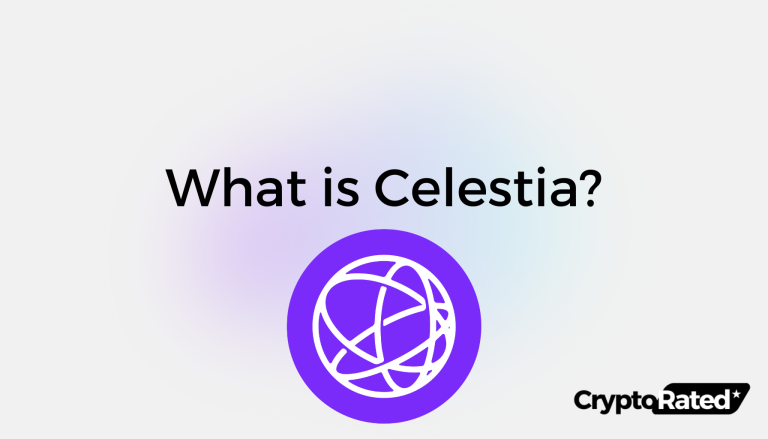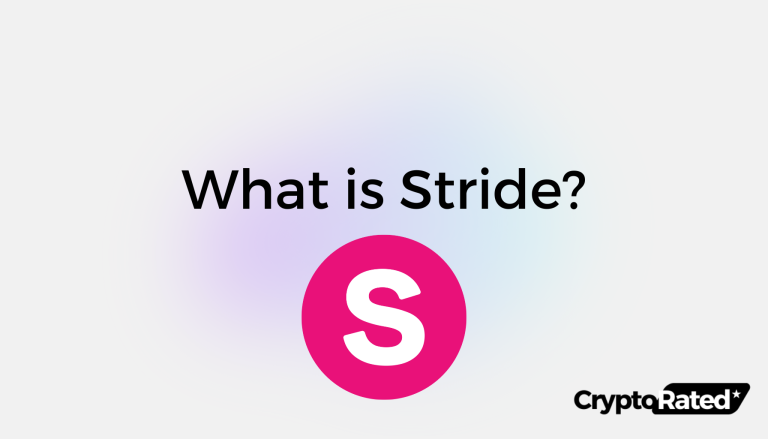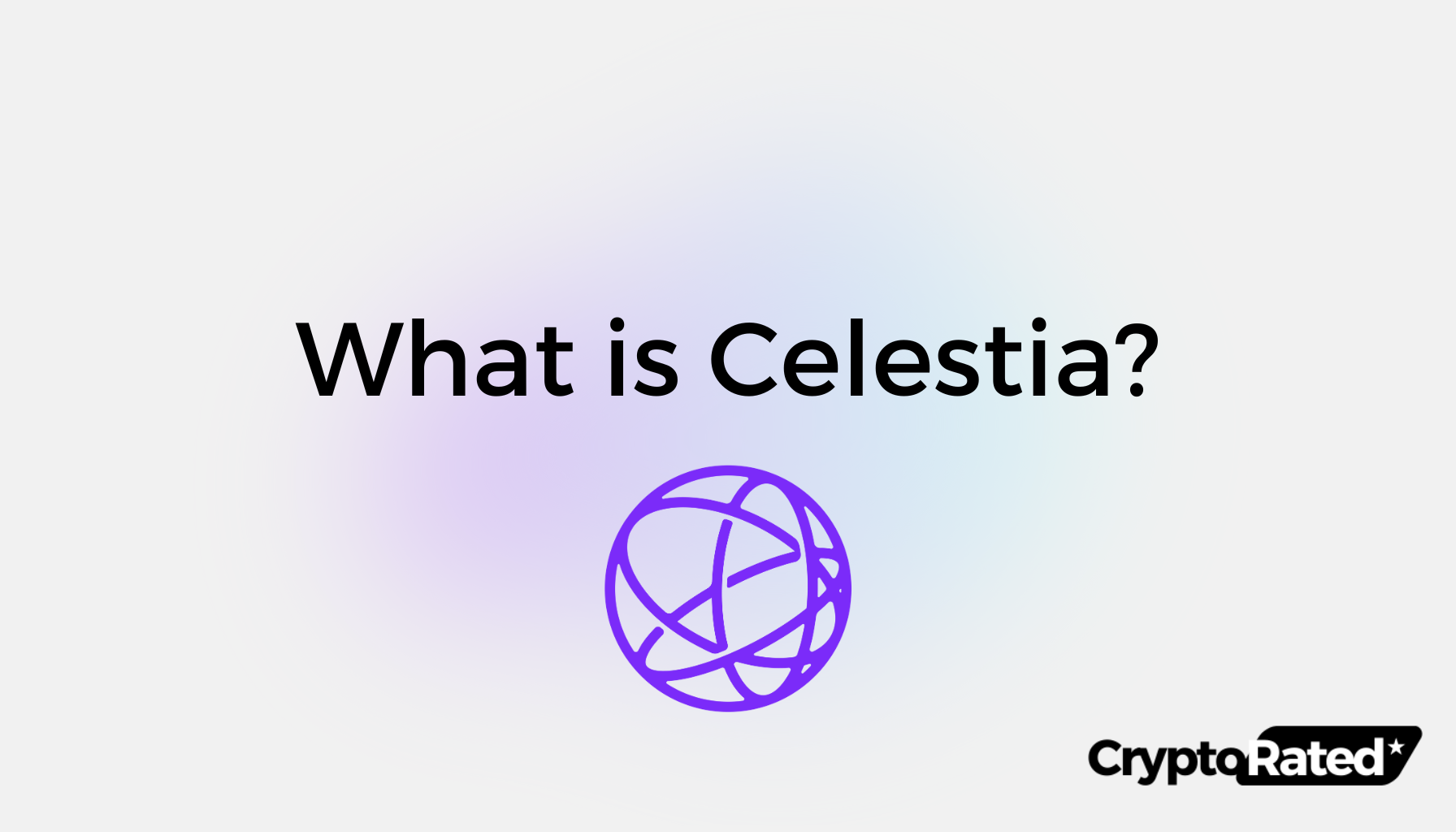
What Is Celestia?
Celestia is a unique blockchain project that operates as both a standalone chain and a layer-2 solution. It serves as the data availability layer (DAL) for other blockchains, providing a secure and scalable way to store and verify transaction data. While it has its own independent chain, Celestia’s primary function is to support other blockchains, enabling them to focus on execution while Celestia handles data availability.
This modular approach offers significant advantages in terms of scalability, cost-efficiency, and sovereignty. Celestia’s unique position as both a standalone chain and a layer-2 solution for Ethereum and custom chains.
Key Takeaways
- Celestia brings a modular approach to blockchain, enhancing scalability and security.
- The TIA token powers the Celestia network’s functionalities and governance.
- Celestia boasts wide-ranging programming language support, significant funding, and seamless Ethereum integration.
- TIA has rallied by over 600% in the past year.
What Is The History of Celestia?
The Celestia project was initially conceived in 2019 in a paper written by Mustafa Al-Bassam. John Adler (creator of Optimistic Rollups) and Ismail Khoffi1. They recognized the need for a more scalable and modular blockchain architecture and began working on a prototype of Celestia.
In 2021, the Celestia team led by released the first public version of the Celestia codebase and began working on building the network. They also started to develop the Celestia Token (TIA), which would be used to secure the Celestia network and pay for data availability services.
Celestia had a number of major milestones in 2022. The network’s test net successfully launched in Q2 2022,2 and in Q3, the team released the Celestia Data Availability Layer (DAL), which is responsible for storing and verifying the data of other blockchains3.
2023-2024: Continued Growth and Development
In early 2023, Celestia integrated with the Cosmos SDK4, which made it possible for Cosmos SDK-based blockchains to use Celestia as their data availability layer. This was a significant milestone, as it opened up Celestia to a large and growing ecosystem of blockchains.
In October 2023, Celestia announced the launch of the Celestia Blobstream, which integrated DA with Ethereum for the first time5. This was a major step forward in making Celestia a truly interoperable platform.
The team is also working on developing a new feature called Celestia Stateless Clients6. This feature would allow nodes to verify transactions without storing the entire blockchain history, which would make Celestia even more scalable.
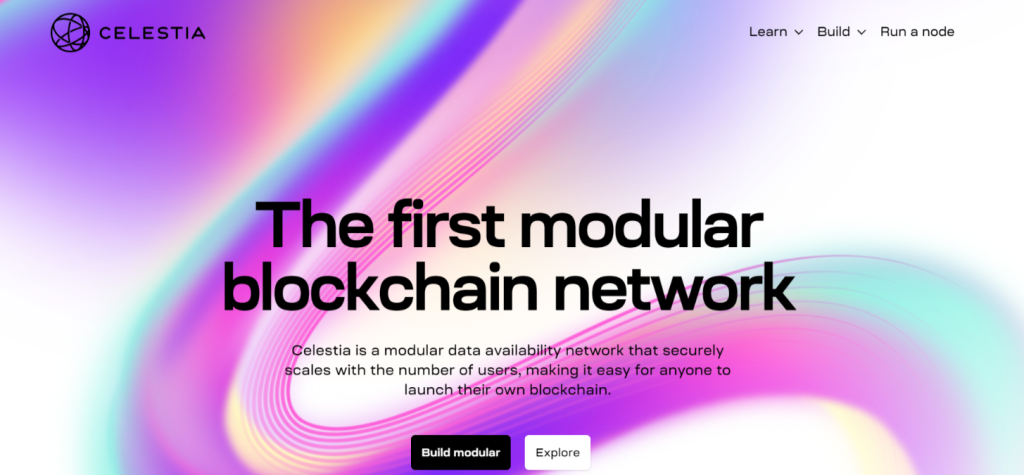
How Does Celestia Work?
Celestia is a modular blockchain network that aims to address the scalability and modularity issues of traditional blockchain systems. It does this by separating the consensus and execution layers and implementing a novel data availability sampling (DAS) mechanism7. Celestia serves as a secure data availability layer (DAL) for other blockchains, allowing them to focus on execution while Celestia handles data availability.
How Does Celestia’s Native Chain Operate?
On its native chain, Celestia operates as a standalone blockchain8 and does not rely on any other blockchain. It has its own consensus mechanism and execution environment, and it stores its own blockchain data. Celestia’s main purpose is to provide a secure and scalable data availability layer for other blockchains. This means that Celestia stores and verifies the data of other blockchains so that other blockchains can focus on their own execution logic.
Celestia’s data availability layer is powered by its unique DAS mechanism9, which allows Celestia to store and verify data in a more efficient way than traditional blockchains. Instead of storing the entire blockchain history, it only stores a small sample of the data from each block. This sample is sufficient to verify the validity of the entire block, and it can be verified by light nodes with a relatively small amount of storage space.
How Does Celestia Improve Scalability for Other Chains?
Although Celestia operates as a standalone chain, it can also be used as a layer-2 solution for other blockchains. This means that other blockchains can use it to store and verify their data without having to build their own DAL. This can be a valuable option for blockchains that want to improve their scalability and security without sacrificing their own independence.
When a blockchain uses it as a layer-2 solution, it creates a bridge to Celestia. This bridge allows the blockchain to send its data to Celestia and receive proof of data availability. These proofs can then be used to verify the validity of the blockchain’s data, even if the blockchain itself is not fully synced with the latest blocks.
Using Celestia as a layer-2 solution can provide several benefits for blockchains, including:
| Benefit | Description |
|---|---|
| Increased Scalability | Celestia can handle a much larger number of transactions than traditional blockchains. |
| Enhanced Security | Celestia is a highly secure network that is resistant to attacks. |
| Reduced Costs | Celestia is more cost-effective to operate than traditional blockchains. |
| Improved Modularity | Celestia’s modular architecture makes it easy to integrate with other blockchains. |
Overall, Celestia is a modular, scalable, secure, and cost-effective platform that can be used to build a wide range of applications.
What Are The Use Cases of ITA?
Celestia (TIA) has several potential use cases, including:
- Staking: Celestia TIA can be staked to secure the Celestia network and earn rewards10. Staking helps to ensure that the network remains decentralized and resistant to attacks.
- Paying for data availability services: Celestia TIA can be used to pay for data availability services, such as storing and verifying data from other blockchains.
- Fueling decentralized applications (DApps): Celestia TIA can be used to fuel decentralized applications (DApps) that are built on top of the Celestia network11.
- Cross-chain interoperability: Celestia TIA can be used to facilitate cross-chain interoperability, allowing users to transfer assets and data between different blockchains.
- Governance: Celestia TIA holders may be able to participate in the governance of the Celestia network, making decisions about its future direction.
Overall, Celestia TIA is a versatile and valuable token that has the potential to play a significant role in the future of blockchain technology.
What Are The Tokenomics of TIA?
According to Tokeninsight12, TIA has a total supply of 1 billion, of which 141 million tokens are already in circulation. Over 25% of the tokens are reserved for R&D, while 15% are held by early backers. These tokens are unlocked in batches with an annual inflation rate of between 8-10%. According to CoinGecko13, TIA has a market capitalization of just over $3 billion as of January 2024, placing it among the top 40 cryptos on the market.

How Has TIA Traded recently, and what are the Celestia price predictions?
TIA has surged by over 649% in the past year to over $18, according to TradingView14, making it one of the most successful large-cap cryptos on the market. Coincodex15 is bullish on TIA, with a high price target of $25 for 2025 and $39 for 2026. Coinedition16 is also bullish on TIA, with a 2025 price target of over $60 and a 2030 target of just under $100.
Remember that crypto prices are extremely volatile, and you should always do your own research before risking your capital. Nothing in this post should be considered as financial advice.
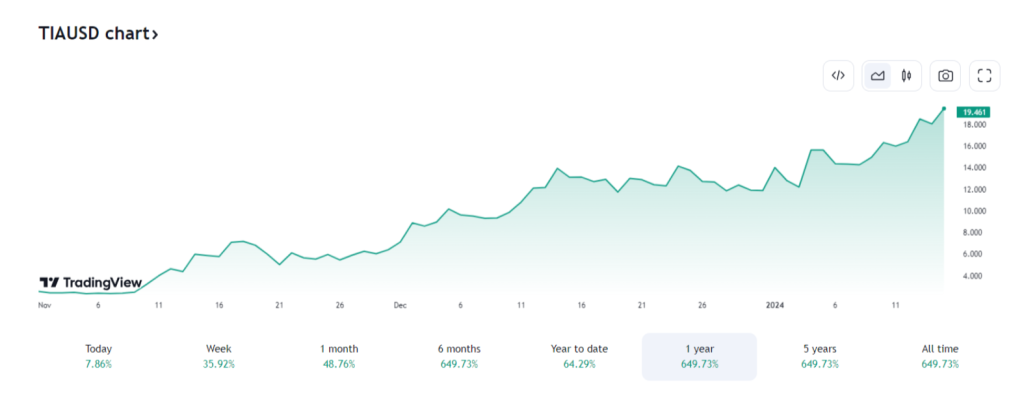
Final Thoughts on Celestia
In conclusion, Celestia is a modular blockchain network with a novel data availability sampling (DAS) mechanism that aims to address the scalability and modularity issues of traditional blockchain systems. By separating the consensus and execution layers, Celestia allows other blockchains to focus on their core functionality while Celestia handles data availability. This approach has the potential to make blockchains more scalable, secure, and cost-effective, and it could lead to the development of a more unified and interconnected blockchain ecosystem.
Frequently Asked Questions
What Is Celestia?
Celestia is a modular blockchain network that aims to address the scalability and modularity issues of traditional blockchain systems. It does this by separating the consensus and execution layers and implementing a novel data availability sampling (DAS) mechanism. Celestia serves as a secure data availability layer (DAL) for other blockchains, allowing them to focus on execution while Celestia handles data availability.
What Is Data Availability Sampling (DAS)?
Data availability sampling (DAS) is a novel mechanism used by Celestia to ensure the availability of data from other blockchains. DAS allows Celestia to store and verify data in a more efficient way than traditional blockchains. Instead of storing the entire blockchain history, Celestia only stores a small sample of the data from each block.
WRITTEN
Peter Barker
Peter is an experienced crypto content writer and a DeFi enthusiast with more than 3+ years of experience in the space. Previously a journalist and news editor at a leading European news sourcing agency.


